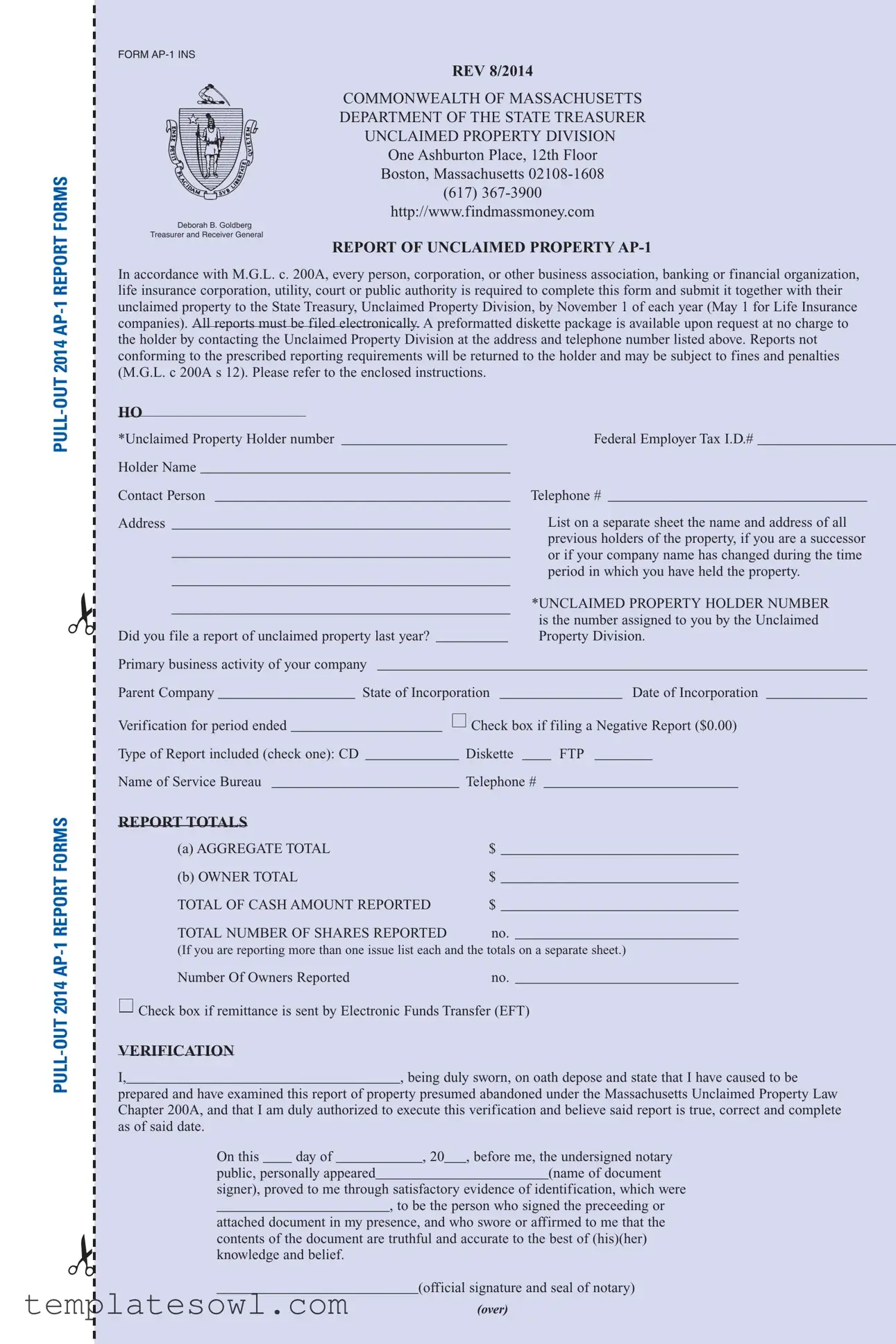What is the purpose of the AP-1 Ins form?
The AP-1 Ins form is designed for individuals, corporations, and various organizations in Massachusetts to report unclaimed property. It ensures that entities fulfill their obligations under Massachusetts General Laws, Chapter 200A, by documenting any property presumed abandoned and returning it to the state treasury.
Who is required to file the AP-1 Ins form?
Any person, corporation, business association, banking or financial institution, utility, court, or public authority that holds unclaimed property must complete this form. This requirement applies annually, so it's important for all applicable parties to stay informed.
When is the submission deadline for the AP-1 Ins form?
The deadline for submitting the AP-1 Ins form is November 1 each year. However, life insurance companies need to submit their reports by May 1. Failing to meet these deadlines may result in fines or penalties.
How should the AP-1 Ins form be submitted?
Reports must be filed electronically. Additionally, a preformatted diskette package can be requested at no cost from the Unclaimed Property Division, which simplifies the submission process for holders.
What happens if the AP-1 Ins form does not meet reporting requirements?
If the report does not conform to the necessary reporting standards, it will be returned to the submitter. Holders may face fines and penalties if they fail to comply with the prescribed requirements set out in the Massachusetts General Laws.
Is there a specific format required for the AP-1 Ins form?
Yes, the AP-1 Ins form requires specific information, such as the unclaimed property holder number, the nature of the business, and details about the unclaimed properties. There are sections for listing account balances, owner totals, and additional information needed for verification purposes.
What types of property are reported on the AP-1 Ins form?
The form covers various types of unclaimed property, including bank accounts, stocks, bonds, insurance proceeds, and even tangible assets like safe deposit box contents. Holders should review the checklist included with the form for complete guidance on what to report.
Are there any penalties for failing to file the AP-1 Ins form?
Yes, penalties can be imposed for not filing the AP-1 Ins form or for submitting it late. The Massachusetts General Laws outline the ramifications, which can include fines that collect over time for each occurrence of non-compliance.
Where can I find assistance with completing the AP-1 Ins form?
For assistance, you can contact the Massachusetts Unclaimed Property Division via their website or by phone. Additionally, detailed instructions are available with the form, offering guidance on how to complete and submit it correctly.


